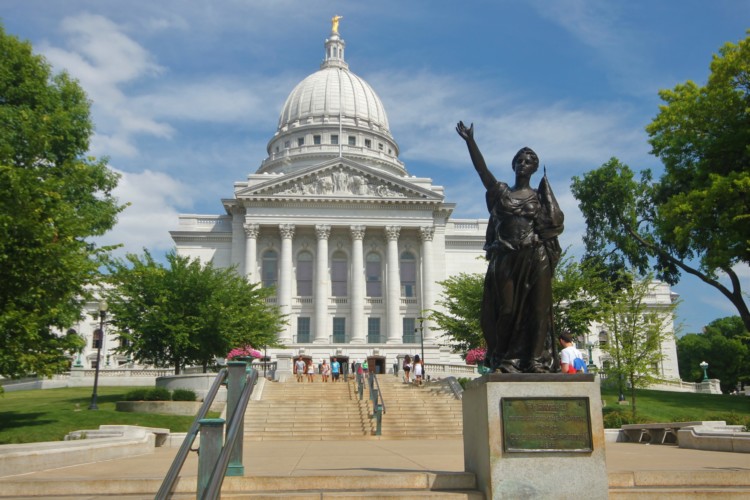Michele McLaughlin is President of the Knowledge Alliance, a D.C.-based “non-profit, non-partisan organization focused on dramatically improving K-12 public education by advocating for the widespread, effective use of research-based knowledge in policy and practice.” Here, she talks about her experience interacting with decision makers in Washington, reflects on the often unseen ways that research shapes and influences ideas, and outlines implications for researchers looking to inform policy and practice.
What should we know about the different ways that research is used by policymakers?
I spend a lot of time on Capitol Hill meeting with committee staff and key officials at the U.S. Department of Education. In my experience, policymakers tend to view research in a linear fashion—from investment in research, to development of an intervention, to implementation of that intervention with the goal of improving student outcomes. This fairly straightforward process is what we might call the “instrumental” use of research.
But the reality is that research is often used in less direct ways. For example, when I worked for the Chairman of the Senate HELP Committee, I used research to inform my policy memos to the Senator. The research informed our thinking about the issues, but it did not dictate a particular program or practice; this typifies the conceptual use of research. This type of research use may be unacknowledged or undervalued by policymakers, practitioners, and even researchers.
“The research informed our thinking about the issues, but it did not dictate a particular program or practice; this typifies the conceptual use of research.”
When research is used “conceptually” rather than “instrumentally,” what does the process look like? To what extent does the research contribute to change?
One illustrative example originated in Chicago at the district level. In the 1990s, less than half of the students in Chicago’s public high schools were graduating. The community, including school administrators, parents, and teachers, were asking how to improve graduation rates, why students and schools were struggling, and where to begin addressing the issues. These questions were of a more conceptual nature than, for example, asking what practice should be adopted. Around the same time, the Consortium on Chicago School Research at the University of Chicago developed the “On-Track Indicator as a Predictor of High School Graduation.” This provided an early indicator of dropout risk, demonstrating substantial evidence between being on-track for graduation in the freshman year of high school and the likelihood of graduating on time.
“In addition to inspiring change at schools, the findings also spurred demand for more research.”
The indicator showed that on-track students had completed enough credits by the end of freshman year to be promoted to tenth grade, and had failed no more than one semester of a core subject area. What’s more, the research showed that being on track was a more accurate predictor of graduation than students’ previous achievement test scores or background characteristics, including race, economic status, and gender. Thus, the indicator challenged many basic assumptions and took graduation from a problem outside of the school to a problem that could be addressed inside the school. In addition to inspiring change at schools, the findings also spurred demand for more research.
For the school district, one of the most important implications of these findings was that addressing freshman on-track rates needed to be a priority. Rather than using a study to justify the adoption of a specific program or policy, the schools used the research to identify and better understand ninth-grade on-track status as an area for intervention. With that knowledge, schools began to implement new programs and procedures aimed at students in the freshman year, tailored to the individual needs, challenges, resources, and expertise unique to the particular school. By 2011, nearly 75 percent of students were considered on-track for graduation. So, this is a key example of how research can yield change, even when it is illuminating conditions and circumstances, not prescribing specific actions.
“…research can yield change, even when it is illuminating conditions and circumstances, not prescribing specific actions.”
The Chicago research has had a national impact as well. It has been integrated into the work of the Regional Educational Laboratories (RELs), a federally-funded network of partnerships between researchers, school districts, state departments of education, and others, designed to use data and research to improve students’ academic outcomes. Other districts are now using on-track indicators to monitor student progress. Just last year, REL Northwest produced a practitioner’s guide to implementing early warning systems to help spread these effective practices. And all ten RELs are now working together to conduct webinars to assist additional districts in understanding and implementing these systems.
Given that there are these different types of use, and that research may be “used” to shape the way policymakers and practitioners conceive of issues rather than prescribing specific actions, what are the implications for researchers? What could researchers potentially do differently?
In general, I think education researchers need to do a much better job on the communications front, and funders—including the federal government—should require that basic research be translated for use by education practitioners and disseminated widely. It is simply not sufficient for researchers to publish their research project in peer-reviewed journals. Generally, the only people who read the journal articles are other researchers who have access to these publications, most of which sit behind a paywall. I think the incentives in higher education need to change as well; there has to be some way to reward researchers for research translation, not just journal publications.
At the end of the day, we should all be concerned with whether research gets used by the field, in either an instrumental or conceptual manner. Otherwise, what’s the point? If, at the end of the day, it doesn’t help educators do their jobs better or improve teaching and learning, then we shouldn’t be funding it.
With an eye toward the future, what role might researchers play in informing policy and improving policy and practice responses to social challenges?
I think there is a huge opportunity for researchers, as long as they can figure out how to communicate clearly and succinctly, and how to connect with policymakers. When I worked on the Hill, I heard from think tanks all the time, many of them with very sophisticated communication operations. However, the quality of the underlying research varied considerably, and some of the think tanks were openly partisan. But policymakers, particularly Congressional staff, need to have the best evidence at their fingertips, and education researchers can and must make it easier for them to access and digest.
“…policymakers need to have the best evidence at their fingertips, and researchers can and must make it easier for them to access and digest.”
With the new federal education law governing K-12 education, and a new definition of “evidence-based” policy and practice, there is an immediate opportunity for researchers to inform policy. Federal research and technical assistance programs, like the RELs and the Comprehensive Centers, are designed to assist states and districts in sorting through the evidence, so they should play a prominent role as the new law rolls out. These programs are not set up to tell states and districts what to do, but rather to help them use the best available evidence to accomplish their goals. RELs and Comprehensive Centers are not the only actors in this space, and, given the demand, I could envision institutions of higher education and other organizations serving an important role in helping states and districts interpret and apply the new definition to their work.





